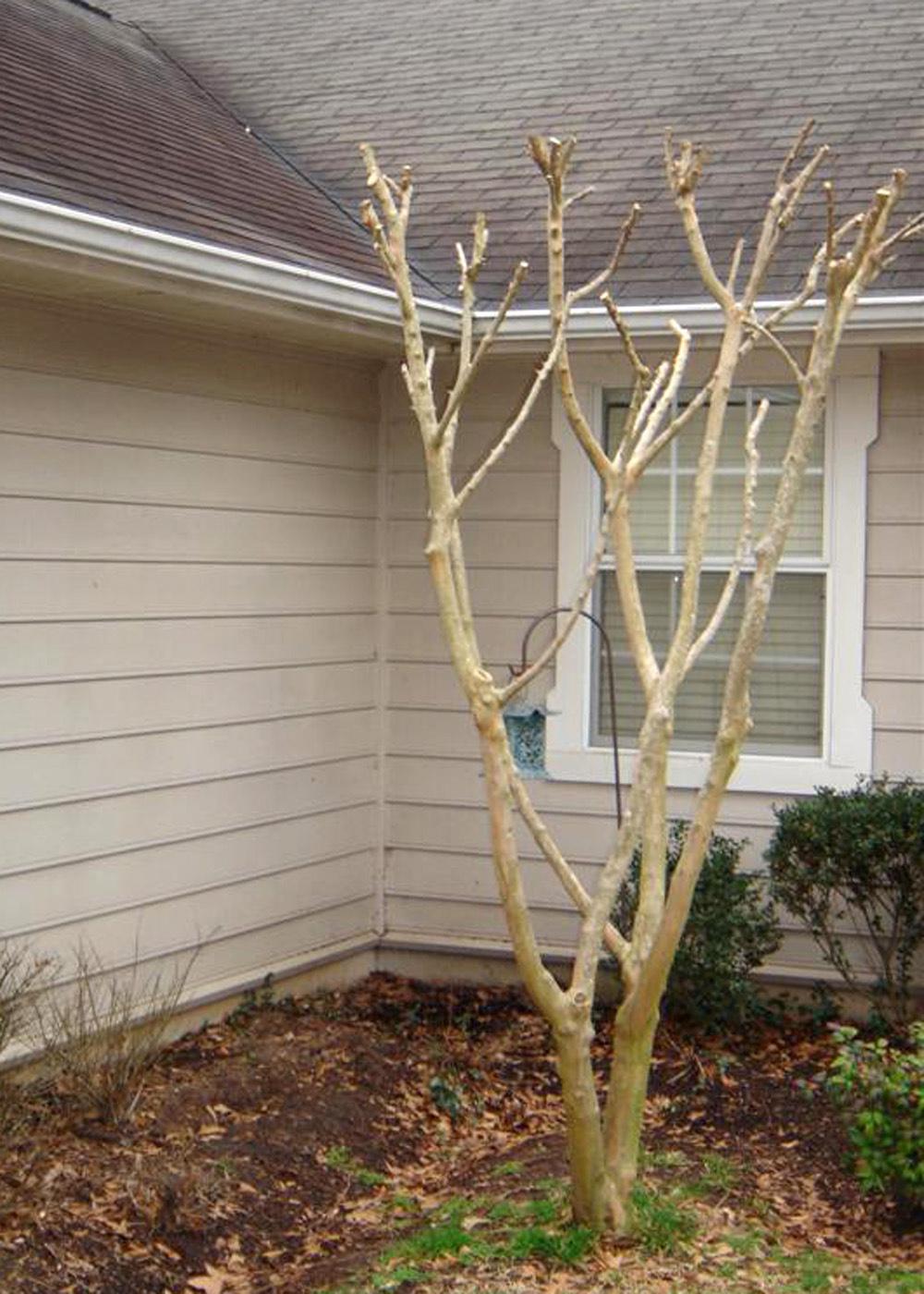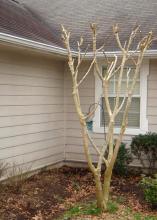Information Possibly Outdated
The information presented on this page was originally released on February 11, 2010. It may not be outdated, but please search our site for more current information. If you plan to quote or reference this information in a publication, please check with the Extension specialist or author before proceeding.
Don't let pruning turn into 'crape murder'
We've all seen it happen, and some of us have even committed it. We try not to stare, but we can't look away. It's just so...well, ugly. It is 'crape murder,' and it's no laughing matter.
Crape murder occurs when crape myrtle trees are pruned to the same point for many years, causing unsightly knots on the trunks. This greatly diminishes the plant's aesthetic appeal and its structural integrity.
Pruning crape myrtles and other plants this time of year is an important task. You do not have to prune, but if you choose to, it should be done properly. With a few helpful hints, you can have a beautifully maintained landscape without committing crimes against your crapes.
Calls are streaming into Extension offices as gardeners are eager to begin work in their landscapes. They want to start pruning plants, pulling weeds and cleaning up the landscape. Although many of you are ready to get back to work -- I mean fun -- in the garden, the wait may be a little longer since a certain groundhog saw his shadow on Feb. 2.
Gardeners are always asking why, when and how they should prune ornamental plants. We prune for many reasons: to control size and shape, to remove unwanted or diseased growth, to promote flowering, and to create forms.
Late winter through early spring is a great time to prune broadleaf evergreens such as hollies, boxwoods and nandinas, and summer-flowering plants like crape myrtles, roses and altheas. Do not prune spring-flowering plants such as forsythias, spireas and azaleas until the blooms have dropped.
Use several pruning techniques to prevent having that cookie-cutter landscape. You may lightly cut back the tips of a Japanese holly without altering the overall shape. You can remove the older canes of nandinas and blackberries to thin out the canopy.
With formal hedges of boxwood and holly, it is best to lightly shear them to a desired shape. Do not do this for the entire landscape because the results can be unfortunate.
You can drastically cut back broadleaf evergreens to rejuvenate them. I did this last weekend to a group of Dwarf Yaupon Hollies. It may take two summers before they are completely full again, but it was better than removing and replanting the entire bed.
Now back to this crape murder situation. The practice began with pollarding, which is cutting branches back to the trunk to produce long, straight shoots. It is a great theory, but not many, including myself, understand the true art of this practice.
The best idea is to avoid pruning the same spot on the trunk each year. Instead, cut to a place about 12-18 inches higher than the previous year. This will result in a healthier, better-structured tree. At some point, you may even decide to just let the crape myrtle have a natural shape.
Whatever method you use, be certain your pruners are sharp, clean and working properly. Stop by your local Mississippi State University Extension office for publications on the subject of pruning.









